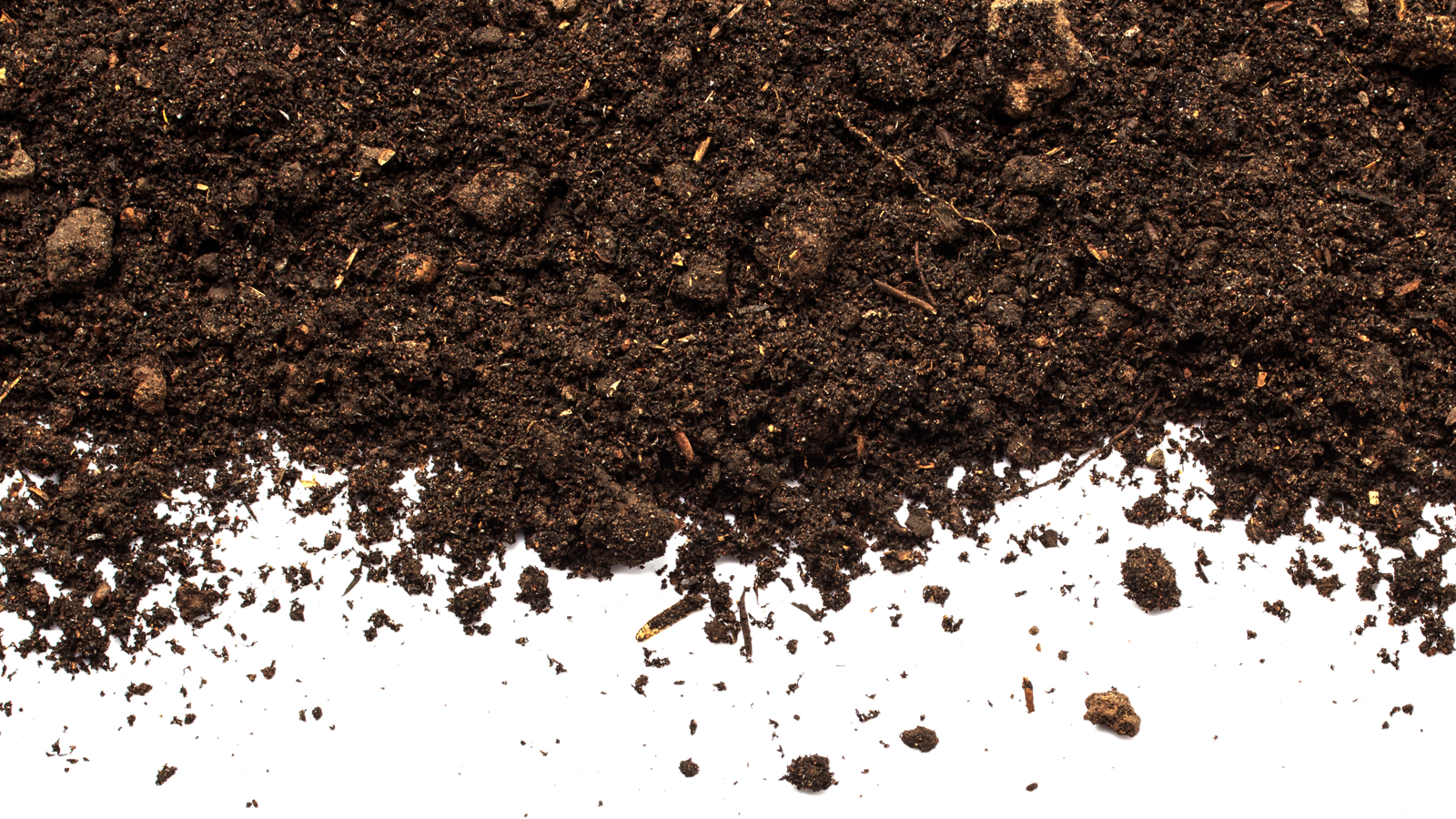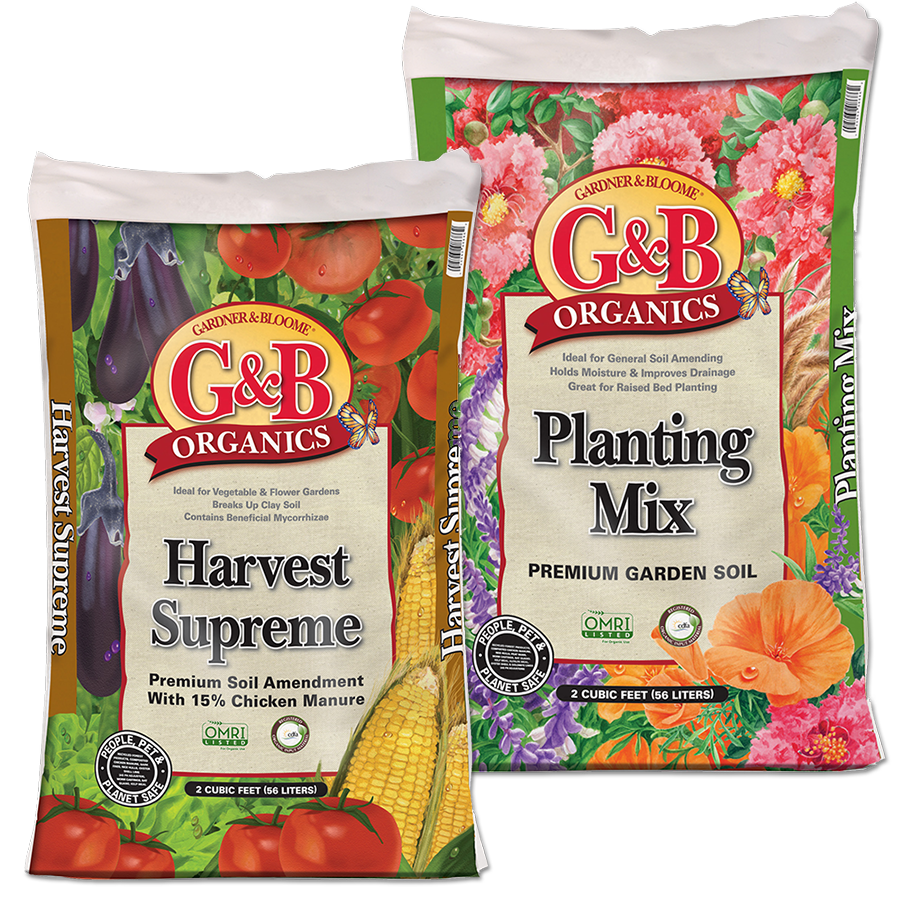
Getting Down and Dirty with Soil
“You can’t have a healthy civilization without healthy soil. You can’t have junk food and have healthy people.” – Joel Salatin
One of the main and most recurring questions we get in the nursery is “why does my plant look sickly?”
There is a list of things that will affect a plant’s appearance and health that originate above ground, such as frost, sunburn, wind, insects and foliar diseases, but in many instances the ‘root’ of the problem stems from below the soil surface...the things we don’t see.
Compacted heavy ‘dead’ soil, combined with poor drainage, and compounded with lack of oxygen due to over watering (rather unavoidable this winter!) will cause a plant to turn yellow, drop leaves, develop soil borne root fungus and open it up to attack from various insects. A healthy plant can fight off insects and diseases far better than a stressed and sickly one, just like we can fight off diseases and illness better when our bodies are well fed and not stressed.
Learning how to improve your soil’s health gives you incredible knowledge which can greatly affect gardening success. So, what is healthy soil? There are many ‘types’ of soils, but overall it is a complex mixture of minerals, water, air, organic matter and countless organisms. For plant life to grow and thrive, the mixture needs to be nutrient rich, well aerated and draining properly. It also needs to be a living ecosystem with both macro and microorganisms--from earthworms to beneficial fungi and bacteria, as this soil life digests organic materials and interacts with the plant’s roots, which in turn provides them with the nutrients they need. When plants are deprived of basic nutrients, they suffer, but by improving the quality of the soil, you can watch your plants thrive.
So how can you help your soil’s ‘health’?
Use organic fertilizers, as they add structure to the soil and benefit the plants with a slow, steady uptake of nutrients. This slower plant growth actually creates sturdier, healthier, more insect and disease resistance than the ‘fast and furious’ growth spurts given by chemical fertilizers. They contain ingredients such as blood meal, bone meal, fish meal, bat guano, alfalfa meal, cottonseed meal and other organic delights that your plants will find delicious. They may not sound tasty to us, but ask any tomato plant if they would rather have organic food over chemical fertilizers, and they will wholeheartedly say “Yes! — there is nothing like bat poo!” In human terms, this could be like having two bowls: one with fresh picked raspberries, and the other with blue razzberry candy. Which is better for us? For our plant friends, Central Valley carries a broad line of excellent EB Stone Organic fertilizers for many different plant needs.
Keep soil covered with mulch. Mulch is a term that simply means materials that are spread around a plant to enrich and/or insulate the soil. Typical mulches are compost, and bark. These reduce the need for water in the summer, protects roots from the cold and heat, suppresses weed growth, and provides a healthier habitat for all the beneficial soil organisms.
Avoid over digging and disturbing of the soil, as it can sometimes do the opposite of loosening the earth, but instead compact it more. This can disrupt and destroy the balance of beneficial soil microbes and good critters. Remember, earthworms have feelings too....well at least I think they do! This is not to say never mix in the amendment, as there are times when the soil needs to be gently churned up, but if your soil structure is fairly loose, when amending, just do what is called “top dressing”. This is placing a layer of new soil, compost, amendments, manure, etc. on top of the soil and around growing plants. As the amendments get watered and break down, they release nutrients to the plants and also filter the organic matter into soil.
Reduce or stop using chemicals to encourage a healthy microbe population that will in turn help feed and protect your plants and also avoid harming beneficials. There are instances when an insecticide, fungicide, or herbicide is needed, so choose organic alternatives when at all possible, and avoid excess run off into the soil.
Continually add organic matter which decomposes and recycles nutrients back into the plants. This is a soil’s ongoing process. If you have the space, time, and ability to compost items such as grass clippings, leaves, yard waste and food scraps to add to the garden, that is a definite plus, but for many of us, that is not always possible. This is where packaged soil amendments come in. Here at Central Valley, we sell a variety of helpful soil conditioners such as Gardner and Bloome Organic Planting Mix. This product is great for mixing half and half with native soil for planting trees, shrubs, and perennials, as it improves drainage, holds moisture and adds nutrients. It is also good for raised planter beds. Gardner and Bloome Harvest Supreme is another organic soil conditioner and amendment, which contains 15% chicken manure and beneficial mycorrhizae microbes. It is an excellent addition to mix into your flower and vegetable beds and planting areas or top dress existing plants with. Chicken manure feeds the soil and provides small amounts or organic nutrients. We carry many other soils and amendments for specific soil and plant needs.

For any additional information and questions on how to get your soil happy and healthy for spring, please feel free to come in and talk to one of our knowledgeable nursery associates. We will happily share the “dirt” on soils and soil amending.
By MARK ERICKSON
Plant Buyer



